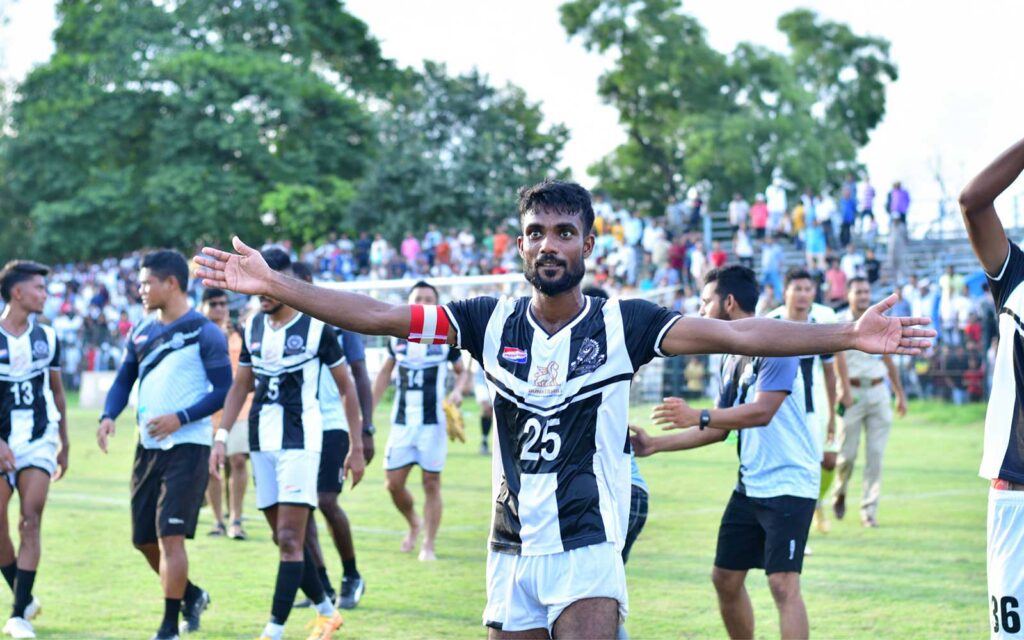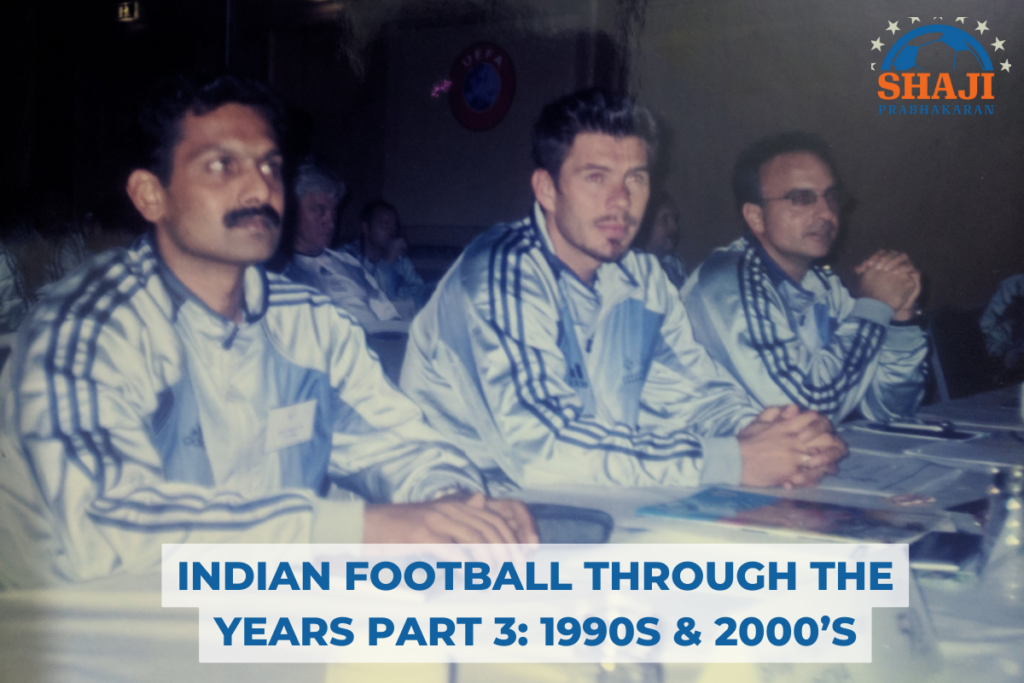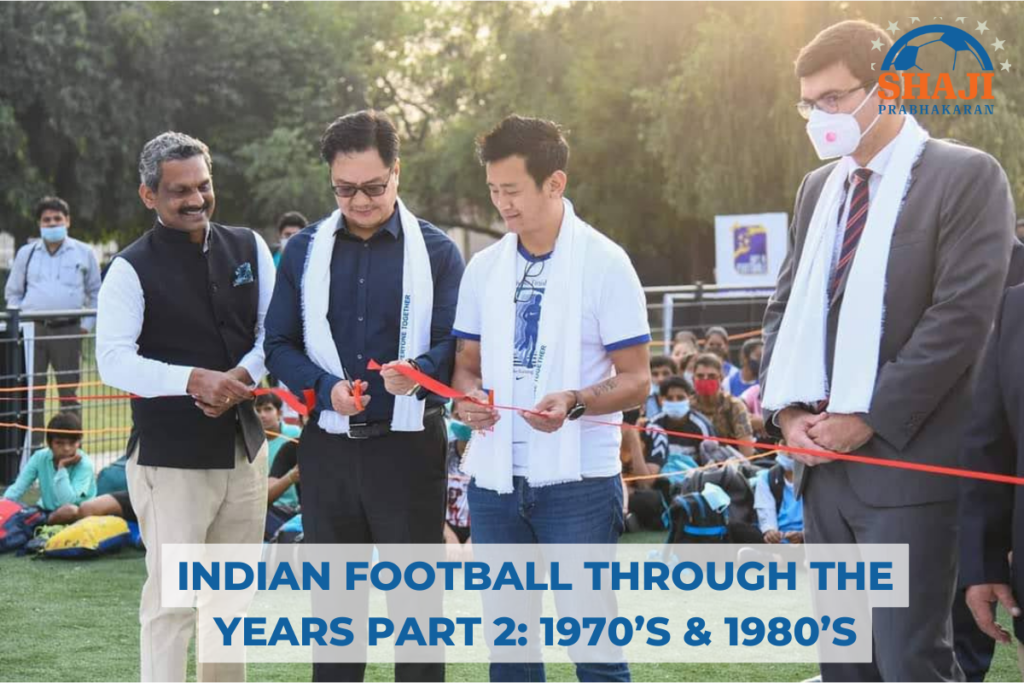AIFF – IMG Reliance It was back in 2010 that AIFF signed a landmark 15-year agreement with IMG-Reliance which at that time was a very significant partnership for Indian football. The agreement granted IMG-RIL all commercial rights to football in India, including sponsorship, advertising, broadcasting, merchandising, film, video and data, intellectual property, franchising, and new league rights. The AIFF also mandated IMG-RIL to develop the branding and marketing aspects related to national teams, domestic competitions, and participating teams. The very same year AIFF appointed Kushal Das as a professional General Secretary. In 2011, AIFF appointed a technical director for the first time in its history who then developed a master plan for the development of football in India. A couple of years later in 2012, AIFF went through a complete organizational review for the first time, which helped AIFF take stock of football in India with the active involvement of all the stakeholders. The review helped AIFF to identify gaps in the organization and improve its process. AIFF launched its own academy in May 2012 in Mumbai followed by three more academies in Kolkata, Bangalore, and Goa. Eventually, all these academies were shifted to Goa in 2015. AFC ASIAN CUP In the beginning of 2011 India took part in the AFC Asian Cup for the first time in 27 years. India was placed in Group C with the Asian giants Australia, Bahrain, and South Korea, and crashed out of the tournament losing to all three opponents. From there onwards India’s focus on football development increased in mammoth proportions and India started to give great attention to grassroots, coach education and youth development. It was the realization that India’s current position was due to a lack of development work since the 80s, a lack of resources, and government apathy towards sports in general. The club licensing system was introduced in India in 2011/12 to develop the clubs by adopting certain best practices. Development of football in Mizoram started in 2012 and the AIFF Grassroots initiative helped the state to establish a very strong grassroots program in the state. 2013-2015 This period was one with a lot of activity and progress for Indian football.
- In 2013 India was awarded the FIFA U-17 World Cup which was a red-letter day in India’s footballing history
- That same year, two-time I-League Champions Bengaluru F.C were formed in 2013 by the JSW group
- The Indian Super League was launched in 2014, which captured the attention of the world because of many ex-star players and encouraging attendance
- India went on to get the opportunity to host the AFC Award night in New Delhi in November 2015, which gave India a fabulous opportunity to showcase its top event management capability to Asian football’s family and friends.
- 2015 onwards AIFF started focusing on selected states where the target was the development at each level so as to improve overall football structure and organization at the state level which would certainly help states to initiate their own development programs and enhance revenue-generating capacities so as to be self-reliant in managing the affairs of state football.
Football saw the emergence of the largest startups in India, which indicates the growing power of football and commercial opportunities with football in the country. The Superstar Effect
“India can only grow in football and in the next 7 to 10 years, we can see some superstars emerging in Indian football”
The possibility of one or two players from India playing in Europe’s biggest leagues in another 5-8 years is a big possibility. The talent and potential are there, the player development pathways are getting stronger and with the football ecosystem and environment getting stronger and better in the next few years there is every possibility that India can become a hub of football talents in the next two decades. It all started with Bhaichung Bhutia becoming the first ever Indian player to play abroad for Bury F.C followed by Sunil Chettri who went on to play for MLS side Kansas City and then for Portuguese giants Sporting Lisbon B Gurpreet Singh Sandhu who is already playing for St. FC in Norway is an inspiration for many youngsters in India and if few more Indians get a similar opportunity to play regular football for European clubs then more kids and youngsters will join football will all seriousness and strong backing from the parents and family. This would make the Indian football environment very strong and significantly increase participation at all levels. With this scenario, investment in football will go up significantly because there will be a strong belief among all external stakeholders. India’s U-17 World Cup 2017 team might throw up future stars for India but the performance of the national team in the World Cup is crucial. If the U-17 team manages to get a few wins and advances to the next round in the competition, then the majority of the Indian population will start believing in the future of Indian football and so will the support base increase which would have a multiplier impact across all levels of football in India. THE AIFF STRATEGIC PLAN On 15th October 2014 a strategic plan for Indian football was presented. The plan established how AIFF should work towards the development of football in the country.
“India is the priority country for FIFA in Asia in terms of football development, we are investing a lot in this country because we believe in its huge potential. It’s a fast growing economy with 1.2 billion people. There’s definitely space for other sports than cricket.” – FIFA Secretary General
- The document lays a strong emphasis on grassroots programs and youth development of the Indian Super League. The former is expected to be implemented in 15 states by the end of the planning cycle. It’s estimated that the grassroots initiative will attract 350,000 participants by 2016, with another 100,000 added every year thereafter.
- According to the plan AIFF expects an I-League club to win the AFC Cup and enter the main round of the continental Champions League by the end of 2017.
- To boost the brand image and reach of the I-League, AIFF hopes it will be a pan-India league in 2017. The AIFF President has revealed that ISL franchises are interested in the I-League and according to the document; they would be expected to invest in grassroots development and infrastructure refurbishment.
- The federation’s proposed National Player Registration System (NPRS) will offer a centralized database for checking fraud and corruption. Moreover, all state associations must appoint a CEO and Technical Officer before the end of 2017. To aid these bodies, a member association development program will be launched for a minimum of six states.
- Finally, a national league for women is expected to be introduced next year. AIFF expects the national women’s team to break into the top 40 in the world and the top eight in Asia by the end of the planning cycle in 2017.
CONCLUSION The Indian economy is strong and is one of the fastest growing economies in the world therefore, football attracting significant investment across all levels is a great possibility going forward, and no doubt the U-17 World Cup might be a game changer. Women’s football participation is growing in India and the potential of women’s football is also huge in the country to be top 5 in Asia, India would require massive work for the next 10 years. Opportunities for women’s football should go up and the proposed national league for women’s football would be of great help in changing the image of women’s football in India. The development, which the AIFF initiated in 2012, would take time to be visible on the ground so it is important to have patience and keep focusing on developing a strong foundation for a better future of the game. Football is the most competitive sport globally therefore, it is not easy to reach the top. However, when India produces a few super stars there is no doubt that football will become the number one sport in India. The dream is to see Indian players commanding million-dollar salaries not only entertaining India but also the world.



